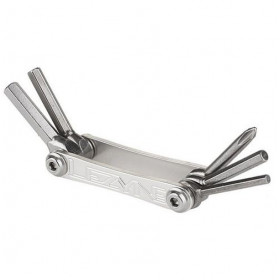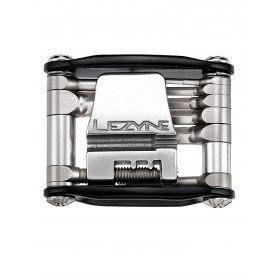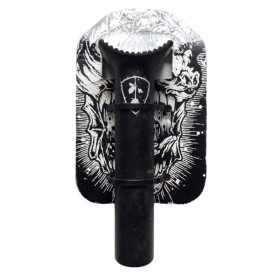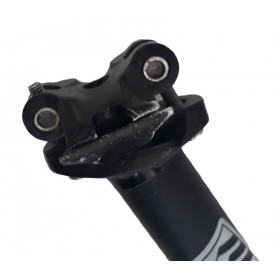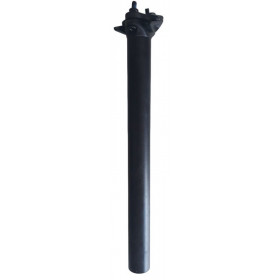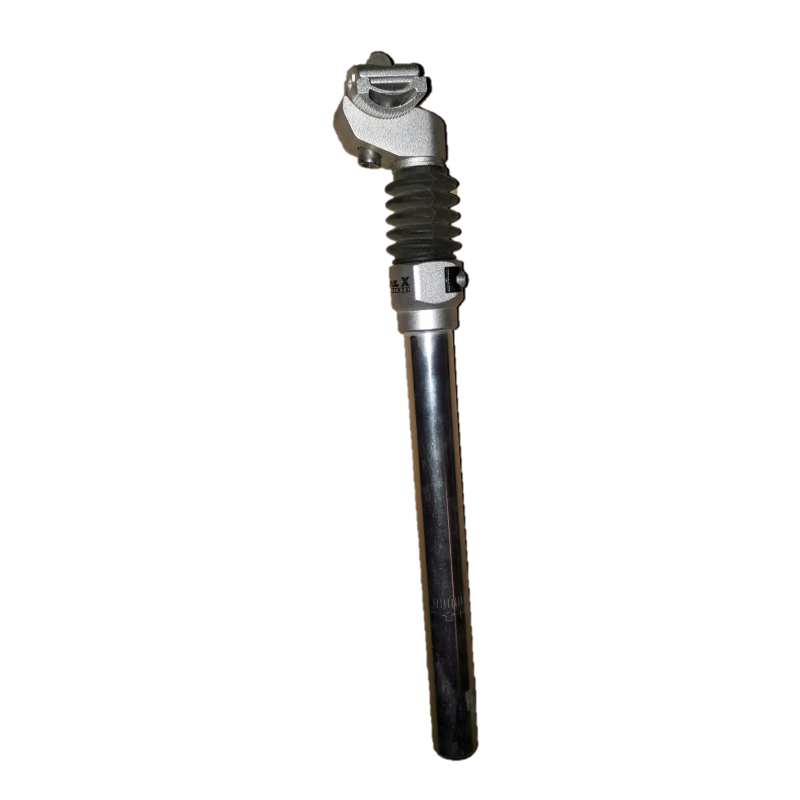 zoom_in
zoom_in
Seatpost shockabsorber Tranz X
- Tranz X
- 1 Items
- New

€10.99 VAT included
Suspension seatpost: improve your riding comfort on any terrain
Cycling comfort doesn't just come from your saddle or frame—your seatpost plays a key role too. If you often ride long distances, explore bumpy trails, or cycle on poorly maintained roads, upgrading to a suspension seatpost can completely change your riding experience. Here’s everything you need to know about this essential accessory for mountain bikers, touring cyclists, and everyday riders alike.
What is a suspension seatpost ?
A suspension seatpost, also known as a shock-absorbing seatpost, is a variation of the traditional rigid seatpost that features an internal suspension system. It’s designed to absorb shocks and vibrations coming from the rear wheel, reducing their impact on the saddle and the rider.
Unlike a standard seatpost, it provides vertical travel (usually between 20 and 50 mm) through a spring mechanism, hydraulic damping system, or elastomer suspension.
The benefits of a suspension seatpost
1. Enhanced comfort on rough surfaces
Whether you’re riding cobblestones, forest trails, or country roads, a suspension seatpost helps smooth out surface irregularities. The result: fewer jolts and significantly improved saddle comfort, especially on long rides.
2. Reduced muscle fatigue
By absorbing impacts, the seatpost reduces strain on the lower back, hips, and spine. This helps you ride longer with less pain—ideal for cyclists with chronic pain or joint issues.
3. Versatility
A shock-absorbing seatpost is suitable for hybrid bikes, electric bikes, MTBs, and gravel bikes. It’s especially valuable for riders on mixed surfaces or who seek more comfort in urban or recreational settings.
Key features to consider
When choosing a suspension seatpost, pay attention to the following specifications:
-
Diameter: must match your bike’s seat tube (commonly 27.2 mm, 30.9 mm, or 31.6 mm).
-
Length: depends on your body size and saddle height settings.
-
Suspension Type:
-
Mechanical spring: affordable and adjustable for stiffness.
-
Elastomer: quiet, low-maintenance, but with limited progression.
-
Hydraulic or air-based systems: smooth and high-performing but more expensive.
-
-
Travel (suspension range): greater travel means better shock absorption—choose according to your riding style.
-
Preload adjustment: some models allow you to tune the spring tension to your body weight and preferences.
Who Should Use a Suspension Seatpost ?
-
Leisure cyclists looking for maximum comfort.
-
Touring riders who spend hours in the saddle every day.
-
Gravel and hybrid bike users on mixed terrain.
-
Urban cyclists dealing with potholes, curbs, and speed bumps.
-
E-bike riders, where higher speeds can amplify road shocks.
Installation tips
Before installing your new suspension seatpost, clean the inside of your seat tube thoroughly. Apply a small amount of assembly paste—especially on carbon frames—and always respect the recommended torque settings. Some seatposts may require occasional maintenance, like greasing or checking the internal mechanism.
In summary
A suspension seatpost is a simple and effective way to boost your bike’s comfort without overhauling your entire setup. Though often overlooked, this component can make a dramatic difference on bumpy roads and long-distance rides. If you're after smoother rides and less fatigue, this might be the first upgrade to consider.



